Denemek ALTIN - Özgür
Researchers identified the molecular basis of soybean seed coat color
Scientific India
|May - June 2021
Gene silencing is the process by which the activity of the genes is regulated so that a particular gene's expression can be prevented.

Small non-coding RNAs such as micro-RNA (22 nucleotide length) and small interfering RNA (siRNA; 21-24 nucleotide length) suppress the gene expression by degradation of corresponding messenger RNA (mRNA) molecules. These small RNAs can be produced either endogenously or exogenously provided to the cell. These small RNAs are processed by Dicer-like enzyme (DCL) and then RNA-induced silencing complex (RISC) assembly is formed with the help of argonaute (AGO) protein. Further, they target their complementary mRNAs and then either silence its expression by partial (by miRNA) or complete degradation the target mRNA (by siRNA). It has also been reported that siRNA also leads to the production of secondary siRNA, which are 21 nucleotides (nt) in length. These secondary siRNAs further amplify the silencing process. SiRNAs which are of 22 nt length, is processed by DCL2 while 24 and 21 nt siRNA are processed by DCL3 and DCL4 enzymes respectively. Various functions have been assigned for 21 and 24 nt siRNAs; however, much has not been known about 22 nt siRNAs. Recently these 22 nt siRNA have been identified in various functions such as environmental stress and nutrient deficiency (Wu et al. 2020).
Seed coat color in soybean
Bu hikaye Scientific India dergisinin May - June 2021 baskısından alınmıştır.
Binlerce özenle seçilmiş premium hikayeye ve 9.000'den fazla dergi ve gazeteye erişmek için Magzter GOLD'a abone olun.
Zaten abone misiniz? Oturum aç
Scientific India'den DAHA FAZLA HİKAYE
Scientific India
Japanese physicists were the first to measure the most tolerant entanglement state, the W state
There are many unusual things that happen in the world of quantum physics.
3 mins
September - October 2025

Scientific India
The Fifth Force: Could It Unlock the Secret of Dark Matter?
What if the universe is powered by a force we've never seen before? For centuries, science has explained nature with four fundamental forces.
3 mins
September - October 2025

Scientific India
A flu test you can chew
As flu season nears in the northern hemisphere, scientists are exploring a surprising new way to detect infection: through taste.
1 mins
September - October 2025
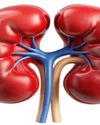
Scientific India
Lab-Grown Kidney Brings Artificial Organ Dream Closer to Reality
In a major leap toward bioengineered organ replacement, scientists have successfully grown human kidney 'assembloids' in the laboratory that mimic key structural and functional features of natural kidneys.
1 min
September - October 2025

Scientific India
Your pumpkin might be hiding a toxic secret
Pumpkins, squash, zucchini, and other members of the gourd family have a surprising trait: they can take up pollutants from the soil and store them in their edible parts.
1 mins
September - October 2025
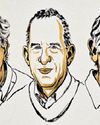
Scientific India
2025 Nobel Prize in Physics Reveals Quantum Secrets in Superconducting Circuits
The 2025 Nobel Prize in Physics has been awarded to John Clarke, Michel H. Devoret, and John M. Martinis for their pioneering experiments that brought quantum mechanics from the invisible atomic world to the macroscopic scale a system large enough to hold in your hand.
1 mins
September - October 2025
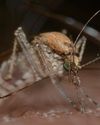
Scientific India
Genomic Evidence Redefines the Evolutionary Age of Mosquitoes
A new genetic analysis has shaken up what we thought we knew about one of humanity's most notorious pests the mosquito.
1 min
September - October 2025

Scientific India
Nobel Prize in Chemistry 2025: Building Molecular Architectures with Room to Breathe
In a scientific breakthrough that bridges molecular design with planetary-scale problems, the 2025 Nobel Prize in Chemistry has been awarded to Susumu Kitagawa, Richard Robson, and Omar Yaghi.
1 mins
September - October 2025
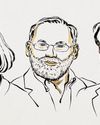
Scientific India
Guardians of Immunity: Nobel Prize 2025 Honors Discoveries that Keep the Immune System in Check
The 2025 Nobel Prize in Physiology or Medicine has been awarded to Mary E. Brunkow, Fred Ramsdell, and Shimon Sakaguchi for their groundbreaking discoveries in the field of peripheral immune tolerance a crucial mechanism that prevents the body's immune system from turning against itself.
1 mins
September - October 2025
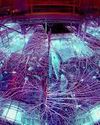
Scientific India
'Is cold nuclear fusion feasible?
In early May 1989, two chemists from the University of Utah, Pons and Fleischmann, arrived in Washington, U.S.A. The aim is to present their findings to members of the US Congress.
3 mins
September - October 2025
Translate
Change font size
